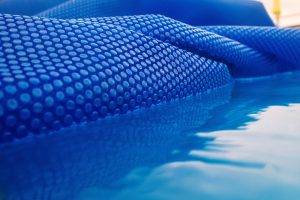Hello all, I recently drained my gunite/plaster pool. I had a white powdery type substance stuck to the surfaces. After some severe scrubbing with a scouring pad, I got about 90% of it off. After some thought, it's possible that it was a lime scale. That however is not thereason for this post. Once I started filling the pool back up, I noticed the water was purple. You can imagine the shock on my face when I was watching this happen before my eyes. The pool water being filled with was city water. It was Saturday afternoon near 5pm, I collected a sample and went to the only pool store open at that time, Leslie's. Long story short, there water testing computer was broke and had no insight as to what it could be. I rolled the dice and bought a bottle of metal out, added to the water and next morning the pool was clear. I still can't understand how brand new water would be turned the color of faboluso. Does anyone have any insight as to what could have been the problem?
Attachments
-
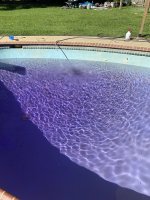 87F60D23-0B0C-4386-B821-A424B9A8AA44.jpeg546.3 KB · Views: 74
87F60D23-0B0C-4386-B821-A424B9A8AA44.jpeg546.3 KB · Views: 74 -
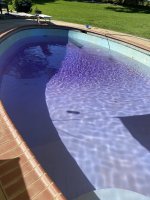 E7F6E841-04DA-4DCC-B438-41D2DE8955CC.jpeg427.9 KB · Views: 70
E7F6E841-04DA-4DCC-B438-41D2DE8955CC.jpeg427.9 KB · Views: 70 -
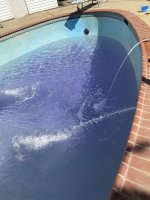 A79A1569-7A52-4B17-9A0F-5496E817B410.jpeg440 KB · Views: 65
A79A1569-7A52-4B17-9A0F-5496E817B410.jpeg440 KB · Views: 65 -
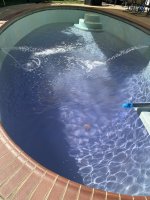 F262E420-61F1-4D35-92EA-9425DCCACCD4.jpeg458.5 KB · Views: 68
F262E420-61F1-4D35-92EA-9425DCCACCD4.jpeg458.5 KB · Views: 68 -
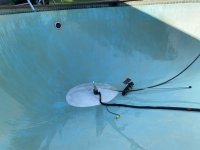 F961C945-CBEE-4DA1-B15F-8DEE36725D1C.jpeg241.1 KB · Views: 69
F961C945-CBEE-4DA1-B15F-8DEE36725D1C.jpeg241.1 KB · Views: 69 -
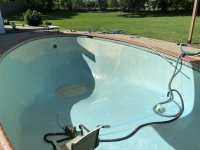 2D158EA2-E6A2-4331-990A-16C0D9B3C806.jpeg405.9 KB · Views: 65
2D158EA2-E6A2-4331-990A-16C0D9B3C806.jpeg405.9 KB · Views: 65 -
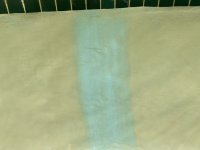 1A596F16-7FBD-4D08-A616-8B11EDAE9AA0.jpeg366.3 KB · Views: 55
1A596F16-7FBD-4D08-A616-8B11EDAE9AA0.jpeg366.3 KB · Views: 55 -
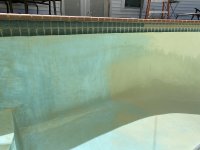 56A125F4-C37B-4E70-A9E8-EC276A9EA81A.jpeg356.2 KB · Views: 62
56A125F4-C37B-4E70-A9E8-EC276A9EA81A.jpeg356.2 KB · Views: 62


